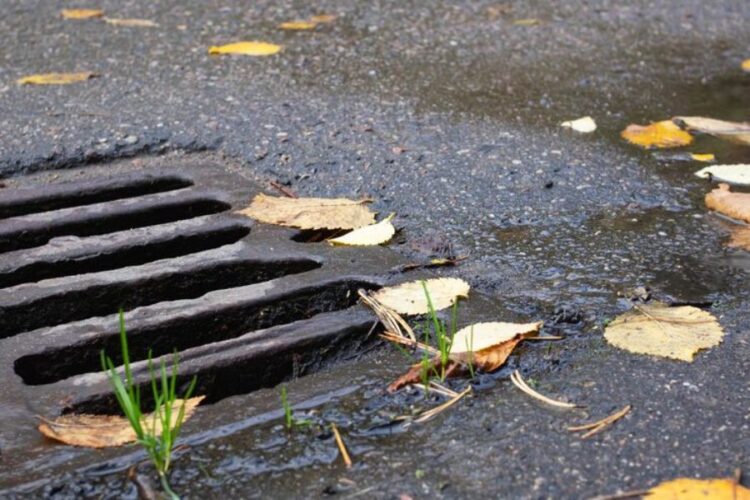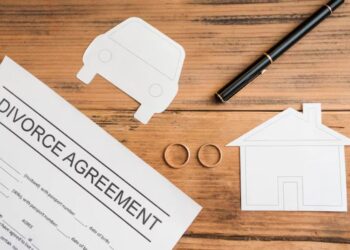A beautiful outdoor venue—a park, a restaurant patio, or an event space—can quickly turn from a pleasant setting to a dangerous trap after a good rain. While we often welcome a cooling shower, the aftermath can expose serious flaws in property maintenance. These flaws, specifically poor venue drainage, are a leading cause of outdoor slip-and-fall accidents, resulting in often painful and costly injuries. It’s a silent but significant hazard that property owners must address, or they could face serious liability, especially when considering the seriousness of Lakeland personal injury cases. Ultimately, an owner’s failure to manage water is a failure to manage safety.
The Physics of a Puddle: Why Water Creates Danger
It might seem intuitive that a wet surface is slippery, but the mechanics behind a rain-slicked venue are a little more complex and significantly more dangerous than a simple wet floor. When water accumulates on an impermeable surface like concrete, asphalt, or tile, it creates a thin, almost invisible layer between your shoe and the ground. This phenomenon, often called hydroplaning on a smaller scale, drastically reduces the friction needed for stable walking.
Furthermore, rain doesn’t just create smooth, shallow puddles; it often washes dirt, silt, and oils off the surface into the standing water. This mixture becomes a slick, muddy slurry, exponentially increasing the slipperiness of the area. A small puddle that looks harmless can actually conceal a highly hazardous, low-friction zone that catches a pedestrian completely off guard.
What Causes Drainage to Fail? The Property Owner’s Role
Poor drainage is rarely a natural occurrence; it is almost always the result of negligence or inadequate design. The responsibility for preventing standing water falls squarely on the venue or property owner. One of the most common causes is simply clogged or improperly maintained gutters and downspouts. When leaves, debris, or sediment block these channels, water is prevented from flowing away from pedestrian areas and is instead directed onto walkways. Another major factor is improper grading of the land. Outdoor surfaces should be constructed with a slight slope to channel water toward designated drains or soft-scape areas.
If a patio or sidewalk is perfectly level, or, worse, slopes inward toward the building, puddles are guaranteed to form. Lastly, inadequate or damaged drainage infrastructure, such as broken catch basins or French drains, means the system simply can’t handle the volume of water from a typical storm. In all these scenarios, the danger is entirely preventable through regular inspection, cleaning, and maintenance.
From a Slip to a Lawsuit: The Injury and Legal Fallout
The consequences of a slip and fall are often far more severe than a bruised ego. A person who slips and falls outdoors on a hard surface is prone to severe injuries like broken bones (wrists, ankles, and hips are common), concussions, or serious back and neck injuries. For older individuals, a hip fracture can be life-altering. Once an injury occurs, the property owner’s failure to maintain proper drainage becomes the central issue in a personal injury claim.
To win a slip-and-fall case, the injured person basically has to show that the property owner knew, or should have known, about that dangerous puddle and didn’t bother to fix it quickly enough. Things like old repair records, past complaints about flooding, or a professional opinion on the bad slope of the pavement become proof that the owner was negligent. If an owner was aware of those repeating puddles but just let them sit, they are legally considered to have been careless.
How to Protect Yourself: Spotting a Drainage Hazard
While property owners hold the ultimate responsibility, pedestrians should remain vigilant when navigating outdoor spaces after rain. The first step is to be aware of the environment. Look for signs of standing water, even if it’s just a sheen on the pavement. Avoid walking near the base of downspouts or areas where gutters overflow, as these are primary points of hazard creation.
If you must walk through a wet area, take smaller, shuffling steps and use handrails if available. If you see a recurring problem, such as a large puddle that takes days to evaporate, report it to the venue management immediately. Documenting the issue with photos can also be a valuable safety measure. Always remember that what looks like a minor inconvenience to the owner is a major threat to your safety.
Final Thoughts: The Crux of Responsibility and Prevention
The issue of poor venue drainage is simple: when owners neglect maintenance, people get hurt. Property owners are legally and morally obligated to manage water effectively, meaning they must ensure surfaces are graded correctly, drains are clear, and infrastructure is repaired promptly. Ignoring these steps is not only dangerous for the public but also invites severe liability, adding to the burden of serious Lakeland personal injury cases. A dry surface is a safe surface, and it’s a standard every venue must meet.









